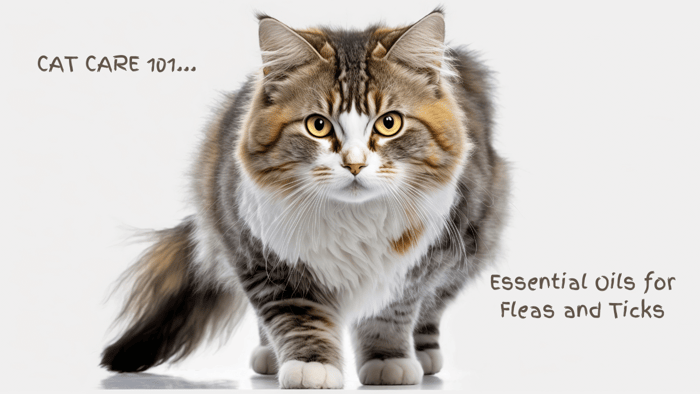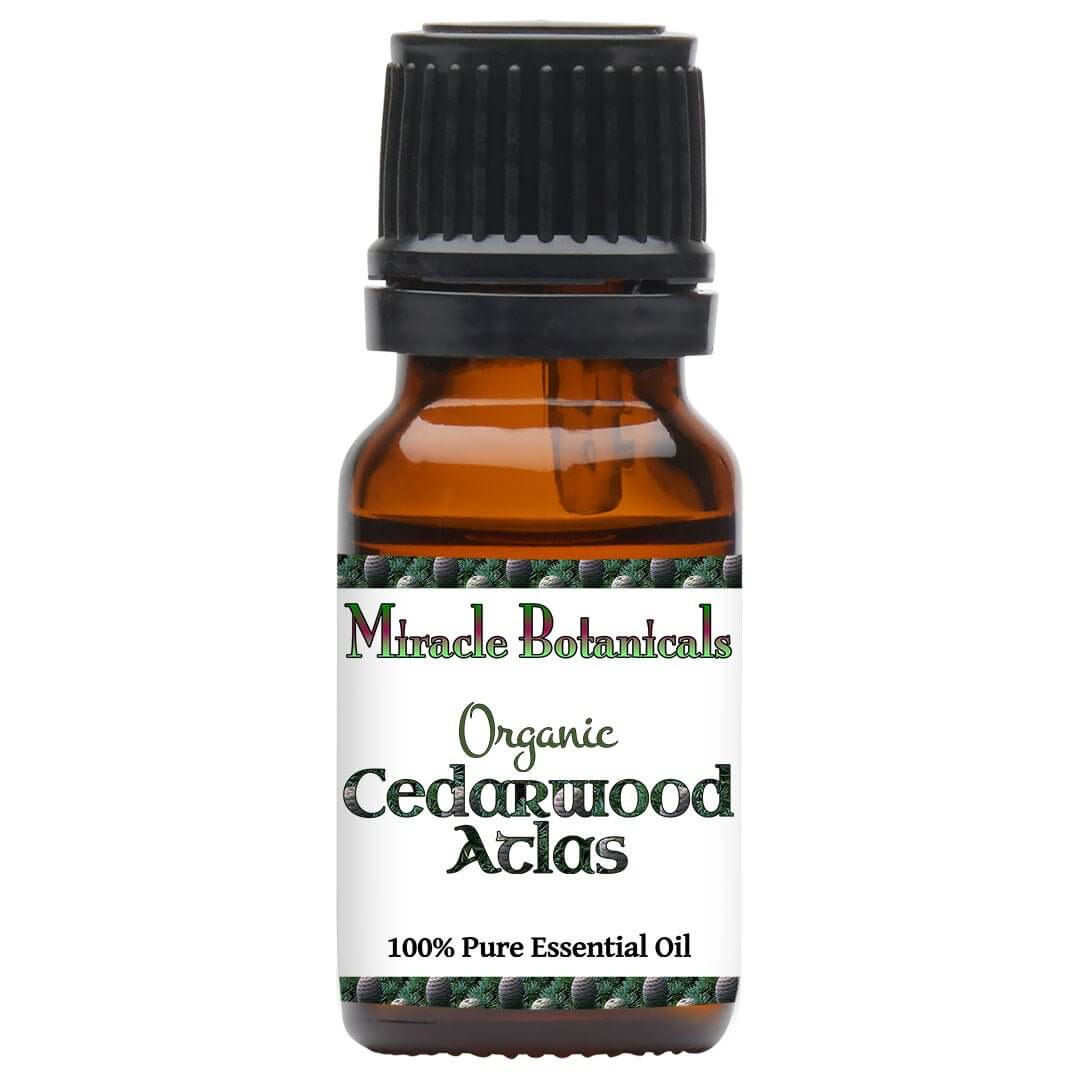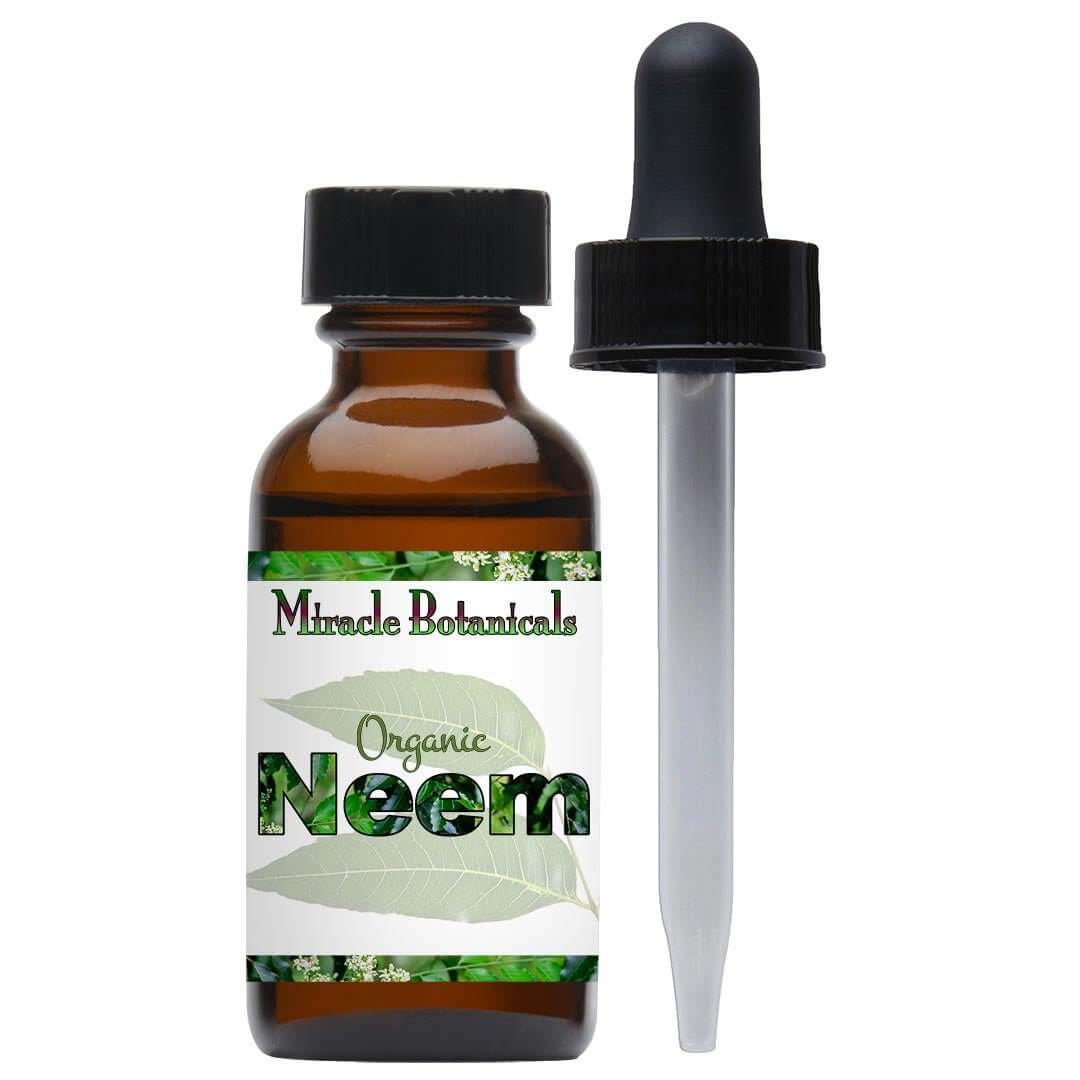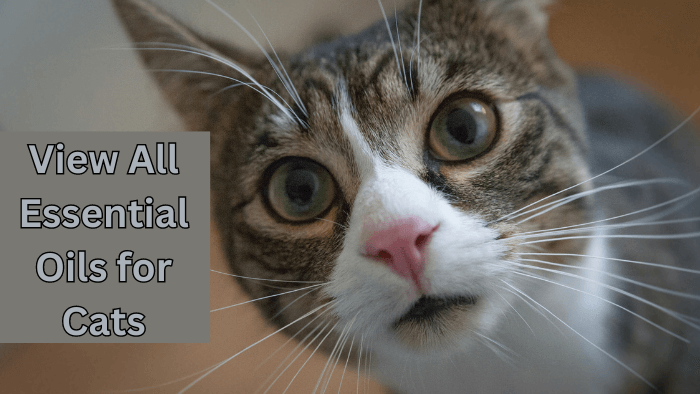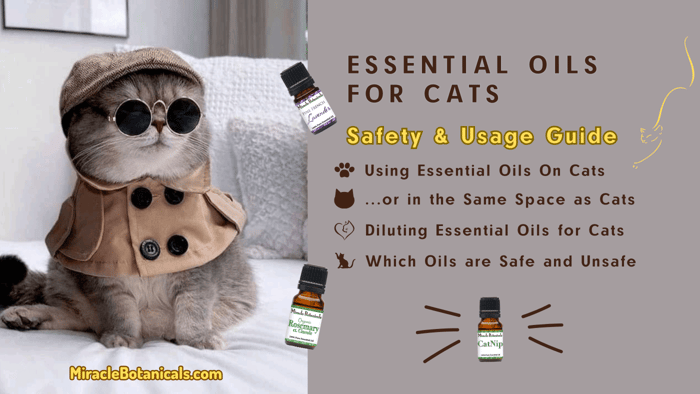With all of the data coming out about the dangers of conventional flea and tick medication, people are wondering about essential oils for fleas and ticks for their feline friends.
Fleas and ticks can be harmful to cats, posing risks not just to their comfort but to their health as well. With the rise of natural and non-toxic home care solutions, essential oils emerge as potent allies in the fight against these pests, combining safety with effectiveness. Essential oils, concentrated plant extracts, stand at the forefront of alternative medicine, offering a holistic approach to flea and tick prevention in cats. Their utilization spans from aromatherapy and beauty care to natural remedies, embodying a quality-focused and spiritual mindset.
Embracing essential oils for fleas and ticks on cats integrates the principles of holistic, plant-based, and non-toxic care into the home, ensuring the well-being of our feline companions. This article guides cat owners through selecting safe essential oils, such as rosemary, cedarwood, and neem oil, and their proper application. It aims to equip pet lovers with knowledge and practical solutions to enhance their cats' quality of life naturally. By focusing on natural, essential oil-based remedies, we advocate for a compassionate and informed approach to pet care, resonating with health-conscious audiences and those inclined towards alternative medicines.
Understanding Fleas and Ticks on Cats
Fleas and ticks are not just nuisances, but they may pose health threats to your cats, seemingly capable of causing a range of issues from skin irritations to severe diseases. Here's a deeper look into the apparent impact of these parasites:
- Skin and Health Complications: Doctors and veterinarians are saying that fleas can lead to intense itching, hair loss, scabs, and skin infections due to allergic reactions to flea saliva. In severe cases, they say that fleas can cause anemia from excessive blood loss. Ticks are equally considered to be a danger. They're thought to cause fever, joint pain, and more severe conditions like Lyme disease.
- Indoor Risk Factors: Contrary to popular belief, indoor cats don't seem to be immune to these parasites. Fleas and ticks can hitch a ride indoors on clothing, other pets, or objects, posing a risk to all household members. Once inside, fleas can infest homes, laying eggs on furniture and carpets, making eradication challenging.
- Prevention and Management: Effective management includes regular use of flea combs, maintaining clean floors, and keeping yards free of debris where fleas and ticks might breed. Discussing safe and suitable flea and tick preventives with a veterinarian is crucial, especially since some over-the-counter products can be harmful to cats. Cedarwood oil, noted for its safety around cats, can reduce the number of fleas and ticks, though its scent might not be pleasing to all felines.
Table of Contents
- Natural Flea and Tick Repellent Recipes for Cats
The Role of Essential Oils in Flea and Tick Prevention
The Role of Essential Oils in Flea and Tick Prevention
While essential oils are celebrated for their aromatic and therapeutic properties, their application in flea and tick prevention for cats warrants caution. Here's a breakdown of the considerations and safer practices:
- Toxicity Concerns: Essential oils are potent, concentrated plant extracts that can be harmful and potentially toxic to cats, even when diluted. Cats have a unique liver detoxification pathway that does not efficiently process many compounds found in essential oils, leading to increased risks of toxicity.
Custom Dilution of Quality Essential Oils for Pets: A Safe Practice Guide
Harnessing the power of essential oils for flea and tick prevention in pets requires a mindful approach to dilution and application. The health and safety of our furry friends are paramount, making it essential to follow precise guidelines. Below, we outline the steps to safely utilize these natural, potent oils for your pets' benefit.
Essential Guidelines for Dilution
- 1% Dilution Rate: A safe dilution rate for pets is typically at 1%, equating to 1 drop of Miracle Botanicals essential oils to 99 drops of carrier oil. This careful ratio ensures the solution is gentle enough for pets, reducing the likelihood of any negative reactions.
- Opt for Premium Quality: When selecting essential oils for any purpose, choosing those of premium quality is crucial. Look for pure, therapeutic-grade essential oils that have been properly distilled to preserve their beneficial properties.
- Thorough Mixing: It's crucial to mix the essential oil with the carrier oil evenly. This prevents areas of higher concentration that could pose risks to your pet.
Additional Safety Measures
- Proper Storage: To preserve their effectiveness, keep your diluted essential oils mixture in a cool, dark environment in a container that limits air exposure.
- Pet Monitoring: Watch your pet closely after application for any signs of discomfort or allergic reactions. Should any adverse effects arise, halt use immediately and seek veterinary guidance.
- Veterinary Consultation: Consulting with a veterinarian before introducing an essential oil regimen for your pet is highly advisable. They can offer tailored advice considering your pet's specific health profile and needs.
By adhering to these guidelines, pet owners can confidently employ Miracle Botanicals' essential oils for natural flea and tick prevention. Your pet's well-being is of utmost importance, and when in doubt, always seek professional veterinary advice from a natural practitioner.
Essential Practices to Remember
- Avoid Direct Application: Never apply undiluted essential oils directly to your pet's skin or administer orally. Ensure exposure is indirect, such as through diffusion in a well-ventilated space.
- Selection of Safe Oils: When choosing essential oils, prioritize those known for being safer, like rosemary or cedarwood oils, and always in highly diluted forms to minimize risks.
In essence, Miracle Botanicals' essential oils can provide a natural alternative for managing fleas and ticks, but their use should be approached with care and informed by professional advice to ensure the safety and well-being of pets.
Top Safe Essential Oils for Cats
When considering essential oils for flea and tick prevention in cats, it's imperative to select oils that are safe and effective.
- Cedarwood Oil: Cedarwood oil contains aromatic compounds (B-Himachalene and A-Himachalene) that are unappealing to fleas and ticks. Their aromas act as a deterrent, making the environment less inviting for these pests. Cedarwood oil is known as one of the safest essential oils for cats.

- Rosemary Oil: The oil contains compounds like cineole, camphor, and alpha-pinene, which are unappealing to many types of insects, including fleas and ticks. These natural constituents make rosemary oil a gentle yet effective deterrent.

It is crucial to avoid oils known to be toxic to cats, such as citrus oils, cinnamon, pennyroyal, peppermint, tea tree, and ylang ylang, among others.
How to Properly Use Essential Oils on Cats
When introducing essential oils into your cat's environment for flea and tick prevention, it's crucial to prioritize safety and follow these guidelines:
- Dilution and Application to Cat's Fur
- Recommended Dilution: For cats, start with a tablespoon of carrier oil, such as macadamia nut or kukui nut oil, and add 3 drops of essential oil, such as cedarwood essential oil or rosemary essential oil.
- Recommended Application: Add about a half teaspoon to your hands and rub them together until they are no longer overly shiny before gently applying the oil to your cat's fur. Gently rub your hands over areas your cat cannot easily lick, such as the back of the neck or the base of the tail.
- Recommended Dilution: For cats, start with a tablespoon of carrier oil, such as macadamia nut or kukui nut oil, and add 3 drops of essential oil, such as cedarwood essential oil or rosemary essential oil.
- Safe Usage Practices:
- Perform a patch test to ensure your cat does not have an adverse reaction to the diluted essential oil.
- Avoid using high-phenol oils like Oregano and Clove, as these are particularly potent and could be more harmful to cats.
- Use essential oils sparingly and infrequently, as overuse can lead to toxicity, especially given a cat’s limited ability to metabolize these compounds.
- Diffusing Oils:
- When diffusing essential oils, always allow your cat the option to leave the room. This helps prevent overexposure, which can lead to respiratory distress or other health issues.
- Start with a minimal amount of time, such as 5 minutes in a waterless diffuser, to see how your cat reacts.
- Work up to a maximum of 20 minutes twice per day as needed or desired
By adhering to these practices, you can use essential oils safely around your cats, contributing to a non-toxic and natural approach to flea and tick prevention.
Natural Flea and Tick Repellent Recipes for Cats
Making a safe and natural environment for your pets is essential to their health and happiness. Here are some simple DIY recipes to help control fleas and ticks on your cats and in your home. Always ensure that the essential oils used are safe for cats, and consult with a veterinarian if you have any concerns.
1. Flea Collar Solution
Keep fleas at bay with a simple, natural solution that can easily be applied to your cat's collar.
Ingredients
- 1 drop of cedarwood essential oil
- 1 tablespoon of water or carrier oil
Instructions
- Mix the essential oil with the carrier oil or water thoroughly.
- Apply 1-2 drops of the mixture to the outside of your cat's collar. Avoid making the collar wet.
- Allow it to dry before putting the collar back on your cat.
2. Flea and Tick Repellent Spray
An easy-to-make spray that can help repel fleas and ticks from your cat's fur.
Ingredients
- 1 drop of cedarwood essential oil
- 1 cup of water
Instructions
- Add the essential oil to the water and mix well.
- Pour the mixture into a spray bottle.
- Spray lightly on your cat's fur, avoiding the face and genital area. Do not saturate the fur.
- Comb through the fur after application to ensure even distribution.
3. Aromatherapy for Indoor Flea Control
Use the gift of aromatherapy to help control fleas within your home environment.
Ingredients
- 1-2 drops of rosemary essential oil
- Waterless diffuser
Instructions
- Add the essential oil to the diffuser
- Run the diffuser in a well-ventilated area, ensuring your cat can leave the room if they want to.
Conclusion
Throughout this article, we've delved into the holistic and non-toxic approach to using essential oils for managing fleas and ticks on cats. By highlighting safe essential oils, coupled with proper application methods, we've underscored the importance of integrating natural remedies with care and wisdom. The provided recipes, from flea collar solutions to indoor flea control, offer practical steps for readers to enact a natural, protective regimen for their feline friends. This integration of nature's solutions emphasizes a balanced, health-conscious approach to pet care, ensuring the well-being of our beloved cats through non-toxic means.
As we embrace these natural methods, we enrich our understanding and ability to provide a safer environment for our pets. When used carefully and mindfully, essential oils extend a gentle yet effective means of pest prevention. For those interested in exploring the potential of essential oils further or to enhance their pet care arsenal, we encourage you to explore and purchase essential oils and hydrosols from Miracle Botanicals. By doing so, you're supporting a mindful approach to pet care and holistic health practices that benefit both pets and their human companions alike.
FAQs
Can I apply essential oils directly on my cat to prevent fleas?
While essential oils are sometimes used as flea and tick repellents, applying them directly to your cat without prior knowledge can be dangerous. Incorrect use can lead to serious health issues or even be fatal for your cat. We encourage you to read the article above carefully to get a more comprehensive answer to your question.
What is the most effective essential oil for repelling ticks on cats?
To safely repel ticks on cats, you can use a mixture of rosemary and cedarwood essential oils. Dilute two drops of each oil in a cup of water, spray it onto your cat’s fur, and comb it through, taking care to avoid the face.
Which essential oils are considered safe to use in environments with cats?
The following essential oils are generally safe to use around cats:
For a comprehensive safety guide on essential oils for cats, refer to This Article.
References
https://www.petmd.com/cat/can-you-use-essential-oils-cats-fleas-and-tickshttps://www.primovapet.com/blogs/news/natural-flea-and-tick-protection-with-essential-oils
https://1stpetvet.com/fleas-ticks-and-your-cat/
https://www.metrovetchicago.com/services/cats/blog/how-fleas-and-ticks-can-affect-your-cat
https://www.webmd.com/pets/ss/slideshow-flea-and-tick-overview
https://www.4pawsanimal.com/services/cats/fleas-and-ticks-for-cats
https://www.haywoodvet.com/services/cats/fleas-and-ticks-cats
https://advancedpetvet.com/services/veterinary-services-for-cats/fleas-and-ticks-for-cats/
https://www.vet.cornell.edu/departments-centers-and-institutes/cornell-feline-health-center/health-information/feline-health-topics/ticks-and-your-cat
https://www.catster.com/guides/does-cedarwood-oil-kill-fleas-on-cats/
https://www.nytimes.com/wirecutter/blog/are-essential-oils-safe-for-pets/
https://themosquitocompany.co.uk/blogs/news/essential-oil-flea-and-tick-recipes-for-dogs-and-cats
https://www.ncbi.nlm.nih.gov/pmc/articles/PMC10317638/
https://www.rockymountainoils.com/blogs/essential-oil-basics/what-essential-oil-repels-fleas
https://animalwellnessmagazine.com/using-essential-oils-with-cats/
https://www.doterra.com/US/en/blog/healthy-living/protect-pets-from-fleas-and-ticks
https://rexipets.com/blogs/the-latest/essential-oils-for-fleas-everything-you-need-to-know
https://www.londondaily.news/comprehensive-handbook-on-using-essential-oils-for-cats/
https://gyalabs.com/blogs/essential-oils/best-essential-oils-for-fleas-or-ticks
https://www.amazon.com/Essential-Oils-Cats-Recipes-Blokehead/dp/1512225657
https://www.youngliving.com/blog/essential-oils-for-pets-a-quick-how-to/
https://www.wondercide.com/products/natural-flea-tick-mosquito-control-for-dogs-evolv
https://earthanimal.com/product/natures-protection-flea-tick-herbal-spot-on-for-cats/
https://naturalcarepets.com/cats/flea-tick/flea-tick-spray-for-cats
https://www.bowbottomvet.com/2013/05/17/use-of-essential-oils-for-tick-and-bug-prevention/


